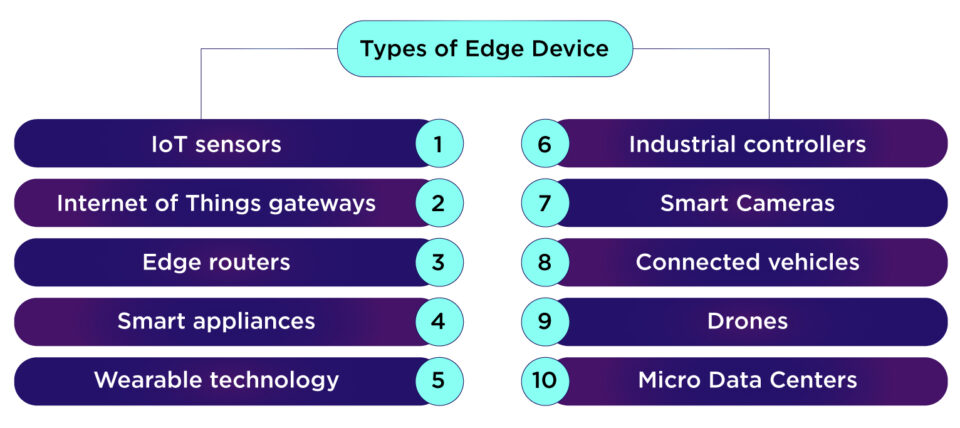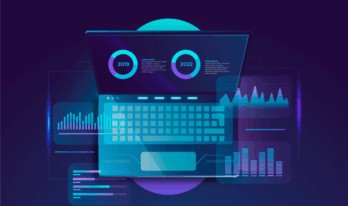With the advancement of technology, the need for sudden data processing is becoming vital. Edge devices are at the forefront of this evolution. They act as critical links at the network's edge. They process information closer to its source and enhance efficiency, responsiveness, and security in an increasingly connected world.
Through this blog content, you will get to know about the meaning, types, working, and benefits of edge devices. Let's dive in!
What is an Edge Device?
Any hardware component that manages data flow at the border of two networks is referred to as an edge device. Depending on the type of device, edge devices perform a number of functions, but in general, they act as network endpoints or points of entry or departure.
Cloud computing and the Internet of Things (IoT) have increased the importance of edge devices, resulting in the demand for additional intelligence, processing power, and sophisticated services at the network edge.
The main purpose of edge devices is to distribute the burden around the network. This relieves part of the strain on hardware located far from a data processing center, be it on-premises or cloud-based.
What Are the Different Types of Edge Device?

- IoT sensors: These are gadgets that collect environmental data, including motion, humidity, and temperature readings.
- Internet of Things gateways: They link various sensors and devices, gathering and preparing data before transferring it to the cloud or other systems.
- Edge routers: These are specialized routers with extra processing power that control data flow between local devices and external networks.
- Smart appliances: They are commonplace home appliances that process data locally to maximize performance, such as refrigerators and thermostats.
- Wearable technology: It includes smartwatches and fitness trackers that continuously gather and evaluate user data.
- Industrial controllers: They are machinery control and monitoring tools used in manufacturing environments. They frequently include real-time processing capabilities.
- Smart Cameras: Surveillance systems have local computing power for applications such as facial recognition and motion detection.
- Connected vehicles: They are automobiles and trucks that analyze data for safety, navigation, and diagnostics using IoT devices.
- Drones: Unmanned aerial vehicles that collect and analyze data for uses like mapping and surveillance.
- Micro Data Centers: Small data centers with substantial processing power and low latency that are located closer to the data source.
How Does an Edge Device Work?
An edge device functions as a bridge between two networks, operating at their boundary. Its main job is to regulate the data flow that occurs inside these networks. Data doesn't merely flow in any direction when it must be transferred between networks. Rather, it is guided down a certain route to guarantee that it reaches its objective promptly and effectively. The edge device is useful in this situation.
Imagine data as a flowing river. An edge device would be a series of small dams or water treatment plants along the riverbank. These structures filter and manage the water, allowing only clean and necessary amounts to flow downstream while controlling the flow rate and ensuring that local needs are met before sending the excess to larger reservoirs.
The various functions that an edge device can execute differ based on its purpose. For example:
- IoT Gateways: Besides aggregating data from multiple sensors, they can perform protocol translation, enabling different devices to communicate seamlessly and even execute basic analytics to filter out irrelevant data before sending it to the cloud.
- Smart Cameras: These can analyze video feeds in real-time for security purposes, detect anomalies or recognize faces, and reduce the need to send all footage to centralized storage.
What Are the Benefits of Edge Devices?
- Permits instant data processing, facilitating prompt decision-making and action.
- Limits the amount of data that is sent to the cloud, lowering the possibility of data breaches and improving security in general.
- Minimizes the volume of data transferred to the cloud, conserving money and bandwidth.
- Functions on their own, continuing to function even when there are network outages.
- Processes data close to the source, allowing vital applications to respond more quickly.
Final Thoughts!
The way data is handled and processed across networks is being revolutionized by edge devices. They increase decision-making, security, and bandwidth utilization by enabling instant data processing and decreasing dependence on centralized systems.
The important role of edge devices will only expand as the need for connected technologies and real-time data continues to rise, opening the door for more robust and effective network architectures across a range of applications.
We explained this concept in a simple way through our blog content. We hope it will increase your understanding of this concept. Keep reading our blogs for more tech-related content and concepts; visit us at WisdomPlexus.
You may also like to read:
An Overview of Bridge in Networking
List of 10 Network Security Audit Checklist: You Need to Follow
8 Best Practices for Network Monitoring




